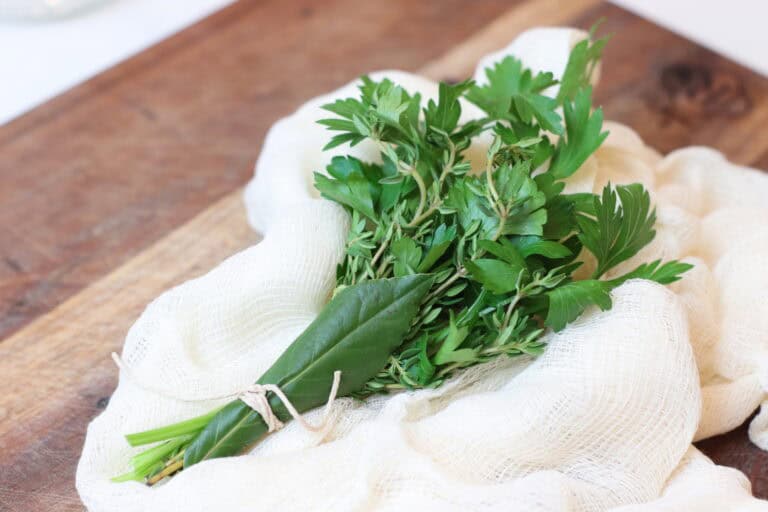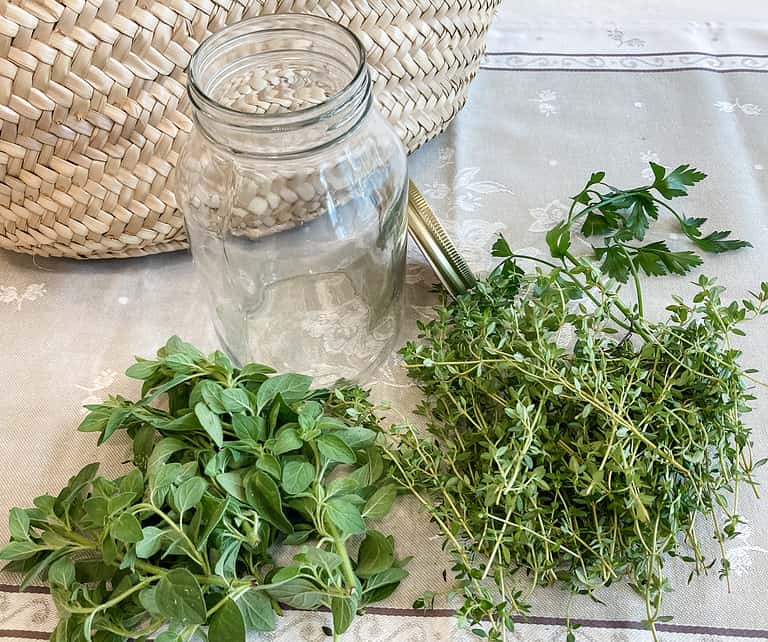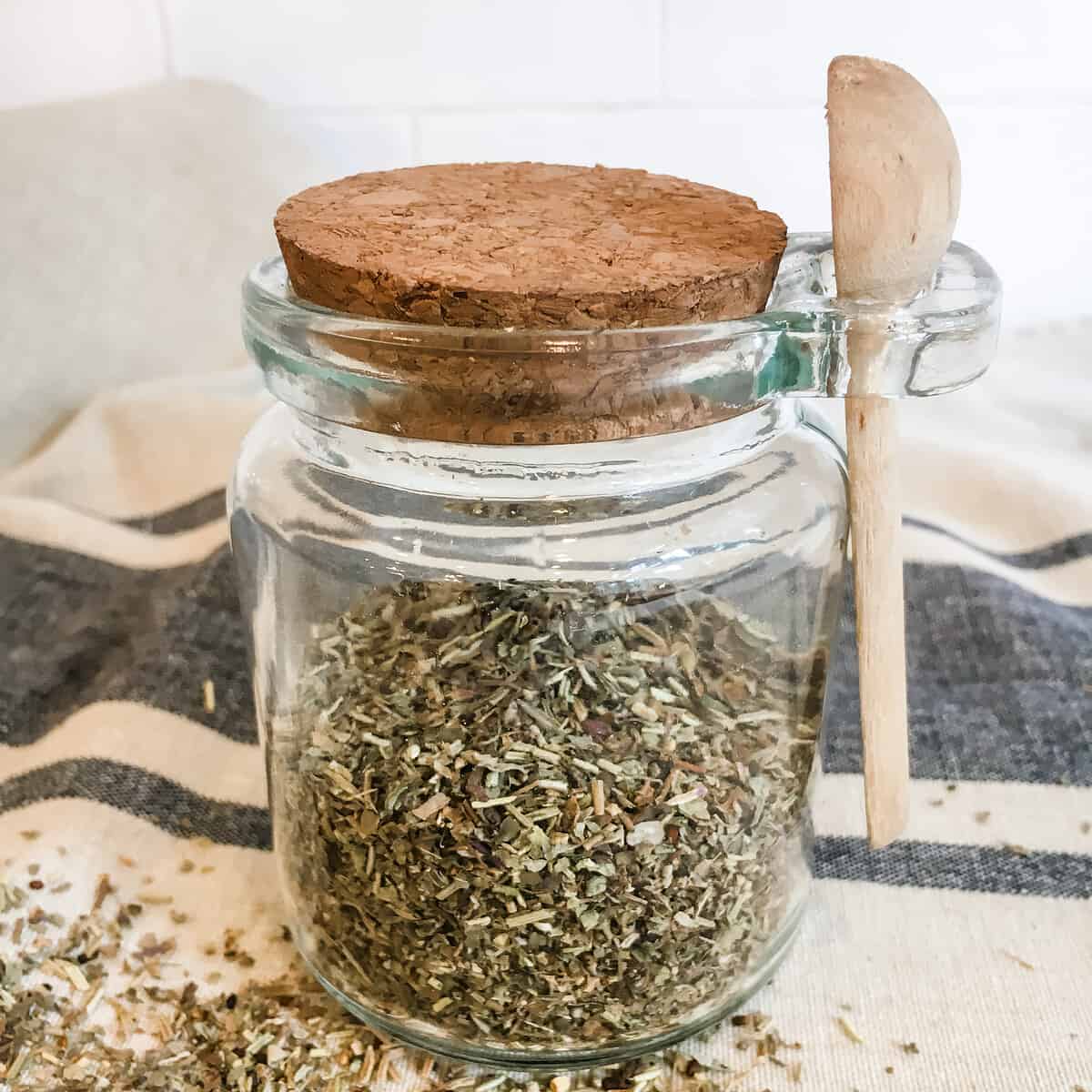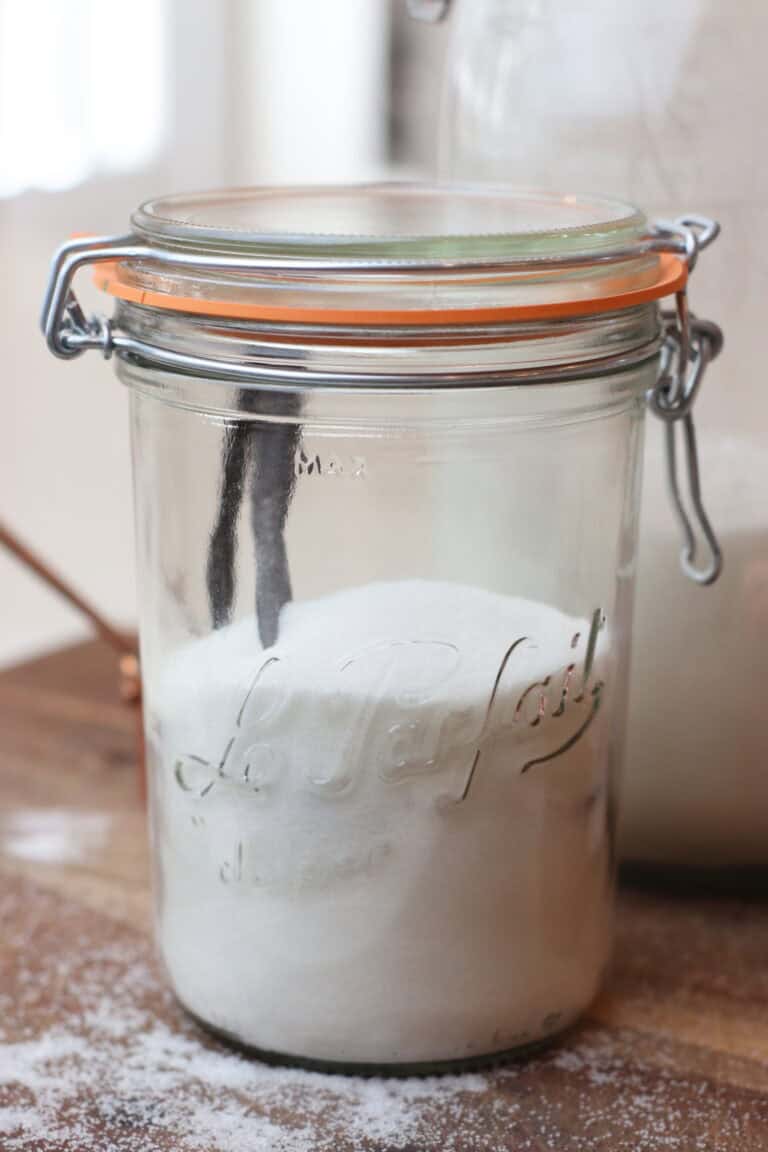This post may contain affiliate links. Read our full disclosure policy here.
A well-stocked pantry is more than convenient — it’s the quiet backbone of wholesome, from-scratch cooking the French way.
If you’ve ever tried baking a French recipe at home and wondered why your pie crust felt heavy or your bread wasn’t quite right, the answer may be in the type of flour you’re using. French flour and American flour are not the same — and understanding those main differences can transform your baking.
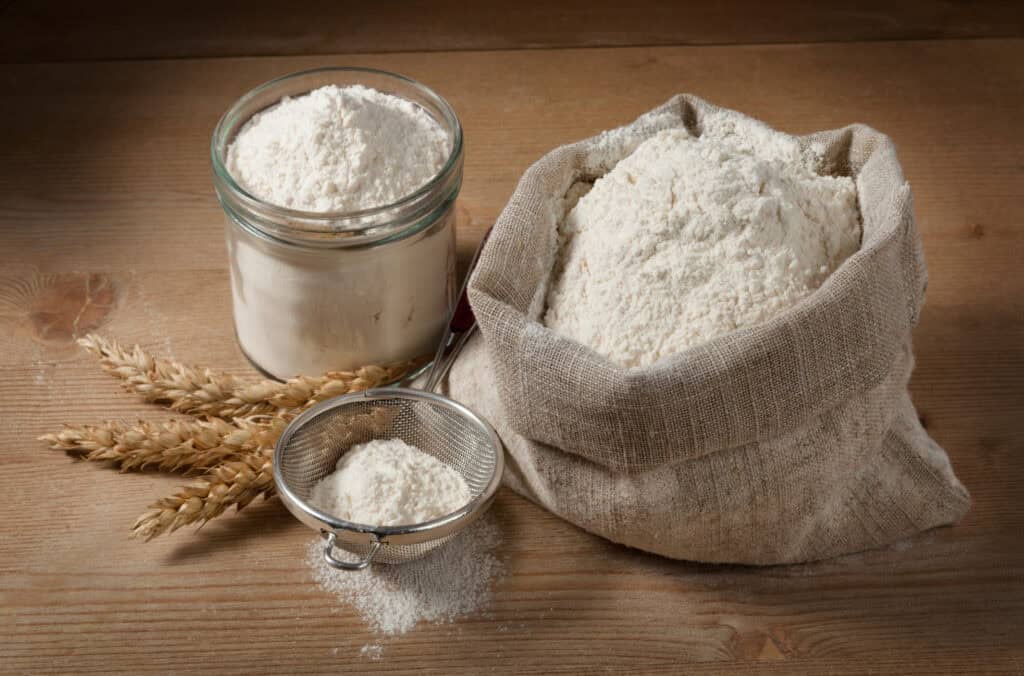
I realized this while experimenting with baguettes and rustic breads at home. Every loaf came out differently — some with a softer texture, others a little dense. That curiosity sent me down a rabbit hole of comparing European flours to those from the United States, and discovering how each country’s milling process, type of wheat, and approach to additives shape the final result.
The first time I baked a baguette with French T55 flour, the difference was immediate — a crustier crust, a lighter middle, and that unmistakable crack when you tap the loaf. It felt like the baguettes I grew up eating in France, and suddenly I understood what I’d been missing.
I still use beautiful organic, stone-milled American flours often, especially from smaller local mills, and I love that they bring their own depth and character. But the T55 gave me that distinctly French texture — crisp on the outside, tender within — and reminded me just how much the flour itself affects the final product. It’s less about one being better than the other, and more about appreciating what makes each unique.
Here’s what I learned about French flour vs. American flour.
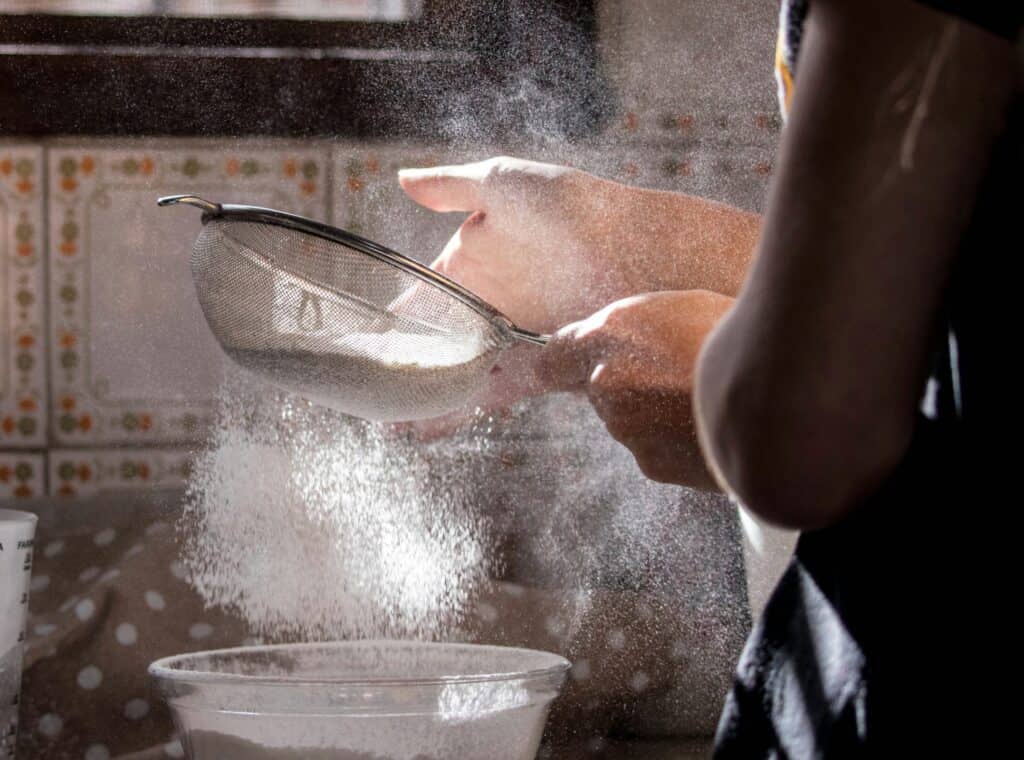
The French Flour System
In France, flours are classified by type numbers — T45, T55, T65, T80, T110, and T150. These “t numbers” don’t describe protein or gluten strength (as in the U.S.) but measure the mineral content — the ash that remains after flour is burned in a lab test.
- T45 – a fine, soft wheat flour with a silky texture, used for delicate pastries like cake flour or pastry flour would be in America.
- T55 – the everyday French bread flour, made from french wheat grown in rich, often sulfur-deficient soil, giving a mild sweetness and lower protein content.
- T65 – slightly more rustic, ideal for artisan bread and rustic loaves.
- T80, T110, T150 – increasingly whole-grain, with a greater amount of bran and amount of whole grain for deeper flavor.
You can think about it like this: the lower the T number, the finer and more delicate the end result will be.
As the numbers increase, so does the texture — from the soft crumb of a tart crust to the hearty chew of a country loaf.

The french mills that produce these flours tend to be smaller local mills, often family-run and located near the wheat fields themselves. French millers focus on preserving the natural grain and its minerals instead of relying on chemical treatments or additives.
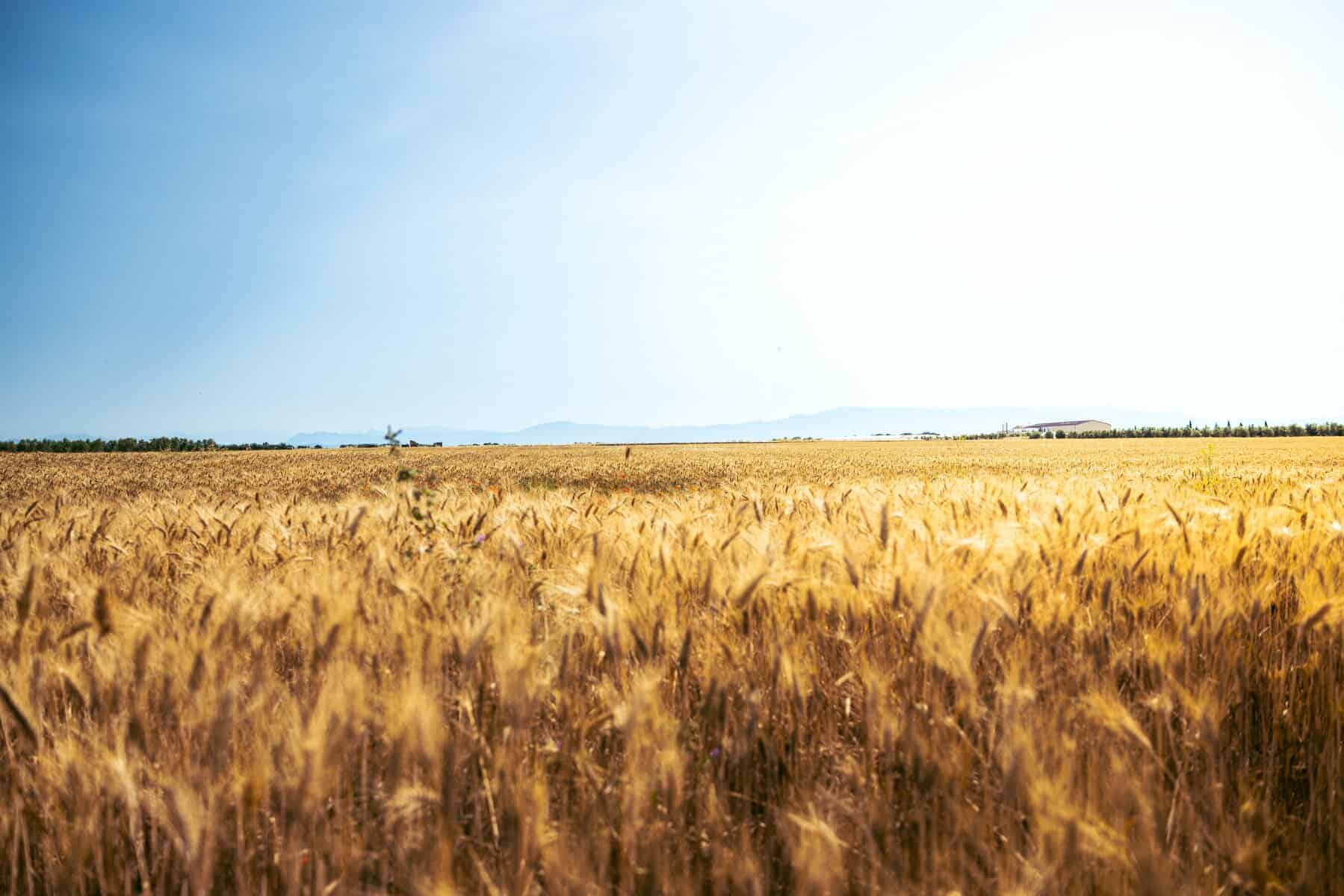
The American Flour System
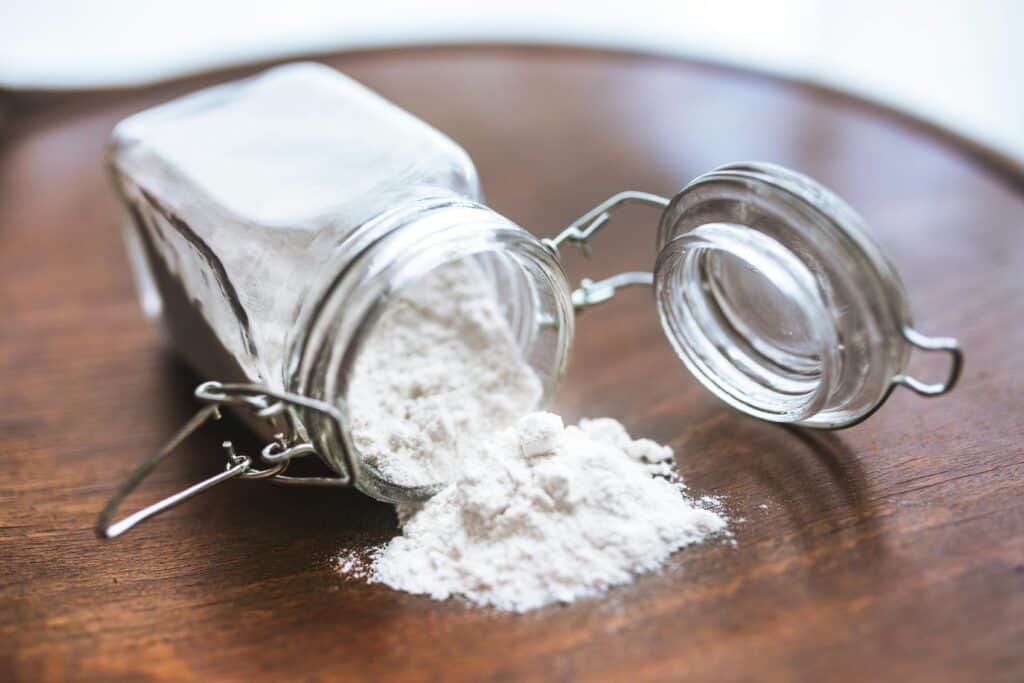
In the United States, flours are categorized by protein content and intended use.
Here’s a closer look at the types of flour you’ll find in any grocery store:
- All-purpose flour – The most common type of flour, made from a blend of hard red wheat and soft white wheat, giving it a moderate 10–11% protein. It’s designed to be flexible but can have a longer shelf life thanks to its aging process and occasional enrichment with folic acid.
- Bread flour – Made from hard wheat with a higher protein content (12–14%), often treated to encourage extra gluten formation.
- Cake flour – Very fine and white flour with less gluten, perfect for tender cakes.
- Pastry flour – Similar to cake flour but slightly stronger, creating buttery, tender pastries.
- Whole wheat flour – Made from the entire kernel portion of the wheat, keeping the bran and germ for flavor and fiber.
Because America’s wheat crops are mostly hard wheat varieties bred for strength and yield, American flour typically has higher protein and more gluten than its European counterpart. It’s excellent for structure — less so for lightness.
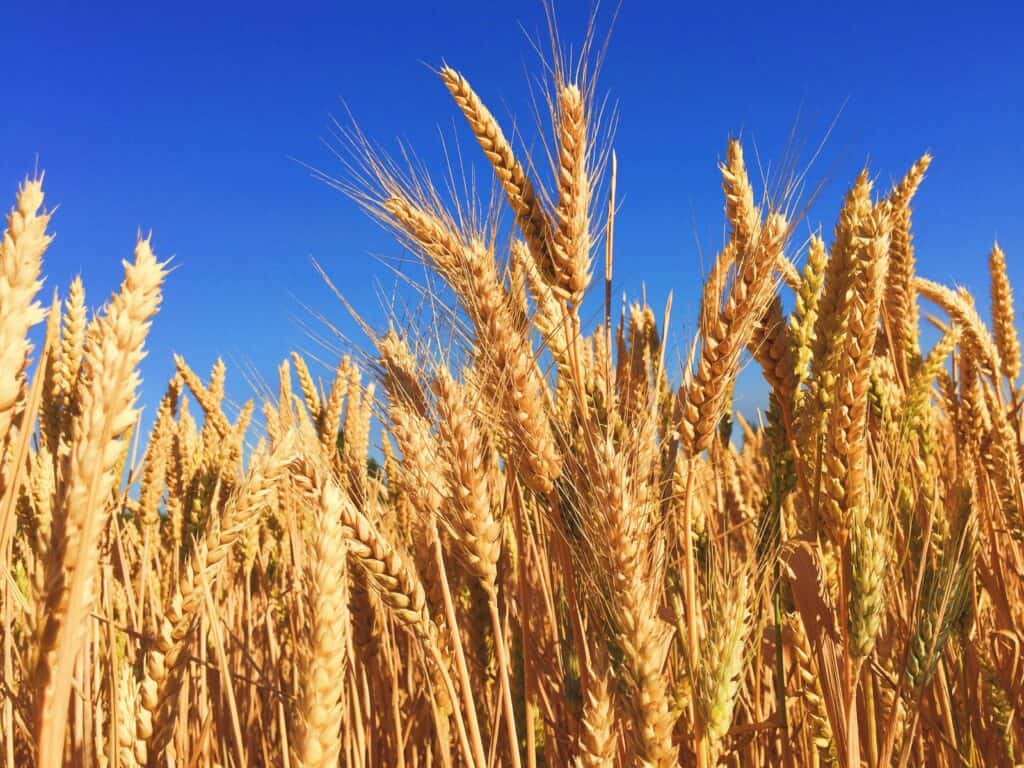
Some American flours are also bleached or aged with chemical agents to achieve a whiter color and longer shelf life. These treatments aren’t permitted in most European countries, including France and Italy, where flour is often left closer to its natural state.
Because processing methods can vary widely in the U.S., choosing an organic, stone-milled flour (like Farm2Flour) is an easy way to keep your baking simple and wholesome.
French flour vs. American flour Comparison Chart
🇫🇷 French Flour vs. 🇺🇸 American Flour
| Feature | French Flour | American Flour |
|---|---|---|
| System of classification | Numbered by Type (T) based on ash content (minerals). | Labeled by use and protein content (gluten strength). |
| Common household flour | T55 – slightly less refined, soft wheat; used for baguettes and tarts. | All-Purpose – 10–11 % protein; milled for consistency. |
| Protein content | Generally lower (9.5–11 %) → lighter crumb. | Higher (10–13 %) → chewier texture. |
| Refinement level | Less refined – retains a touch of bran & germ for flavor. | Highly refined – uniform, neutral taste. |
| Texture & baking results | Lighter, more tender breads & pastries. | Chewier crumb, strong structure. |
| Flavor profile | Nutty, complex, “wheatier.” | Mild, neutral, sometimes bland. |
| Typical varieties | T45 (pastry), T55 (everyday), T65 (rustic bread), T80–T150 (wholegrain). | Pastry, All-Purpose, Bread, Whole Wheat. |
| Best for | Baguettes, tart doughs, croissants, rustic loaves. | Sandwich loaves, chewy breads, cookies, cakes. |
| Closest U.S. substitute for T55 | — | Mix ½ All-Purpose + ½ Bread Flour. |
| Where to find | French or European specialty shops; online (Yummy Bazaar, Amazon). | Widely available in U.S. grocery stores. |
Benefits of Each
- French flours create lighter, airier doughs with a softer texture and more flavor. They’re easier to digest and come in many flour types for different baking styles.
- American flours are reliable, available in every grocery store, and ideal for recipes that need structure or a strong crumb.
Practical Tips for Bakers
- Substitute smartly: For most recipes calling for French T55, blend half all-purpose flour and half bread flour.
- Experiment with specialty flours: Try T65 or T80 for deeper flavor, or chestnut flour in autumn for a distinctly French touch.
- Look for local mills: In both Europe and the U.S., smaller local mills often use a gentler milling process and avoid use of additives and chemicals.
- If you’d like to try a true French flour at home, I recommend the Francine brand, which is easy to find on Amazon. It’s a classic French pantry staple and one of the simplest ways to taste the difference in your own baking.
A Nourishing Perspective: Understanding where your flour comes from — and how it’s milled — is more than a technical detail. It’s a way of connecting with tradition and honoring the ingredients that become the backbone of your bread.
French flour vs. American flour substitutions
🥖 Practical Flour Substitution Guide for Bakers
| If the recipe calls for… | And you’re baking in the U.S.… | Use this instead | Texture & Notes |
|---|---|---|---|
| French T45 (pastry or cake flour) | No T45 available | Use cake flour or ½ pastry flour + ½ all-purpose flour | Light, tender results for pastries, crêpes, and sponge cakes. |
| French T55 (everyday flour) | No T55 available | Blend ½ all-purpose flour + ½ bread flour | Closest match to French all-purpose; balanced strength and softness. |
| French T65 (bread or rustic loaf flour) | No T65 available | Use bread flour or ¾ bread flour + ¼ whole wheat flour | Slightly more chew; great for baguettes and artisan breads. |
| French T80 or T110 (semi-whole flours) | No French version on hand | Mix 2 parts bread flour + 1 part whole wheat flour | Rustic, flavorful crumb — perfect for country-style breads. |
| French T150 (whole wheat) | Need a U.S. equivalent | Use whole wheat flour | Nearly identical; rich in bran and minerals with a hearty texture. |
Tip – For most French recipes calling for T55, blend equal parts all-purpose and bread flour for the closest match.
Recipes to Try
- Apple Galette with a flaky crust
- Homemade Pâte Sucre for tarts
- Authentic French Crêpes
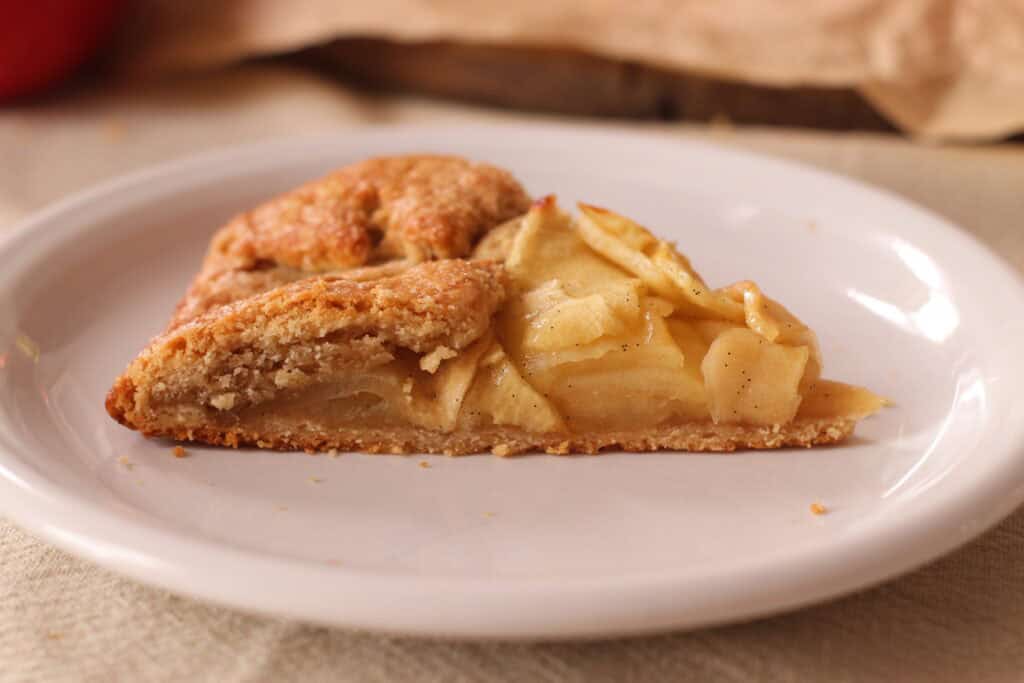
Whether you’re baking with French flour or adapting with what’s in your American pantry, understanding these key differences gives you the freedom to bake more like the French — with curiosity, confidence, and care.
À bientôt,
Gaby

